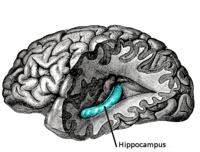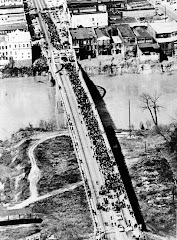Dungannon
(from the Irish: Dún Geanainn meaning "Geanann's fort") is a town in County Tyrone in Northern Ireland. It is the third-largest town in the county (after Omagh and Strabane) and a population of 11,139 people was recorded in the 2001 Census. In August 2006, Dungannon won Ulster In Bloom's Best Kept Town Award for the fifth time. It contains the headquarters of the Dungannon and South Tyrone Borough Council.
Wednesday, September 2, 2009
Dungannon
History
Dungannon's fortunes have been closely tied to that of the O'Neill dynasty which ruled most of Ulster until the seventeenth century and was the most powerful Gaelic family. Dungannon was the clan's main stronghold which made it by default the most important settlement in Gaelic Ireland. The traditional site of inauguration for 'The O'Neill', was Tullyhogue Fort, an iron age mound some four miles northeast of Dungannon. The clan O'Hagan were the stewards of this site for the O'Neills.The last castle was located at what is today known as Castle Hill; the location was ideal for a fort as it was one of the highest points in Tyrone, and dominated the surrounding countryside with the ability to see seven counties depending on the weather. Its location ultimately led to the Army taking over the site for a security installation during The Troubles, only being returned to the local council in August 2007.
This castle was burned in 1602 by Hugh O'Neill, 2nd Earl of Tyrone as the English forces closed in on the Gaelic lords towards the end of the Nine Years War. In 1607, ninety-nine Irish chieftains and their followers, including Hugh O’Neill, set sail from Rathmullan, Co. Donegal, bound for the continent. What followed became known as the Plantation of Ulster and the town and its castle were granted to Sir Arthur Chichester, the architect of the Plantation.
The castle was partially excavated in October 2007, by the Channel 4 show 'Time Team', uncovering part of the moate and walls of the castle.[1]
[edit] After the O'Neills
Dungannon remained the county seat of County Tyrone after the Plantation, but High Court judges who travelled to Dungannon to the courthouse were attacked in the village of Cappagh and the county town was then moved to Omagh[citation needed]. In 1973, the town became the seat of the new district of Dungannon.
In 1782, the town was the location where the independence of the Irish Parliament was declared by members of the Protestant Ascendancy who controlled the parliament at the time.[2]
[edit] The Troubles
On 24 August 1968, the Campaign for Social Justice (CSJ), the Northern Ireland Civil Rights Association (NICRA), and other groups, held the first 'civil rights march' in Northern Ireland from Coalisland to Dungannon. The rally was officially banned, but took place and passed off without incident. The publicity surrounding the march encouraged other protesting groups to form branches of NICRA.[3]
Dungannon was one corner of the infamous murder triangle during the Troubles. For more information see The Troubles in Dungannon, which includes a list of incidents in Dungannon during the Troubles resulting in two or more fatalities.
Dungannon's fortunes have been closely tied to that of the O'Neill dynasty which ruled most of Ulster until the seventeenth century and was the most powerful Gaelic family. Dungannon was the clan's main stronghold which made it by default the most important settlement in Gaelic Ireland. The traditional site of inauguration for 'The O'Neill', was Tullyhogue Fort, an iron age mound some four miles northeast of Dungannon. The clan O'Hagan were the stewards of this site for the O'Neills.The last castle was located at what is today known as Castle Hill; the location was ideal for a fort as it was one of the highest points in Tyrone, and dominated the surrounding countryside with the ability to see seven counties depending on the weather. Its location ultimately led to the Army taking over the site for a security installation during The Troubles, only being returned to the local council in August 2007.
This castle was burned in 1602 by Hugh O'Neill, 2nd Earl of Tyrone as the English forces closed in on the Gaelic lords towards the end of the Nine Years War. In 1607, ninety-nine Irish chieftains and their followers, including Hugh O’Neill, set sail from Rathmullan, Co. Donegal, bound for the continent. What followed became known as the Plantation of Ulster and the town and its castle were granted to Sir Arthur Chichester, the architect of the Plantation.
The castle was partially excavated in October 2007, by the Channel 4 show 'Time Team', uncovering part of the moate and walls of the castle.[1]
[edit] After the O'Neills
Dungannon remained the county seat of County Tyrone after the Plantation, but High Court judges who travelled to Dungannon to the courthouse were attacked in the village of Cappagh and the county town was then moved to Omagh[citation needed]. In 1973, the town became the seat of the new district of Dungannon.
In 1782, the town was the location where the independence of the Irish Parliament was declared by members of the Protestant Ascendancy who controlled the parliament at the time.[2]
[edit] The Troubles
On 24 August 1968, the Campaign for Social Justice (CSJ), the Northern Ireland Civil Rights Association (NICRA), and other groups, held the first 'civil rights march' in Northern Ireland from Coalisland to Dungannon. The rally was officially banned, but took place and passed off without incident. The publicity surrounding the march encouraged other protesting groups to form branches of NICRA.[3]
Dungannon was one corner of the infamous murder triangle during the Troubles. For more information see The Troubles in Dungannon, which includes a list of incidents in Dungannon during the Troubles resulting in two or more fatalities.
Subscribe to:
Posts (Atom)






















